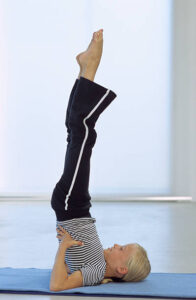Index of Contents
ToggleIntroduction to rheumatoid arthritis
Rheumatoid arthritis (RA) is an autoimmune and inflammatory disease that causes pain, swelling, and damage to the joints. According to the Centers for Disease Control and Prevention, RA affects over 1.5 million adults in the United States. It is more prevalent in women than men.
RA primarily targets the lining of the joints which leads to a painful swelling that can cause bone erosion and joint deformity over time. In the initial stages, the inflammation and pain associated with RA tends to affect the smaller joints first, such as the hands and feet. As the disease progresses, larger joints like the knees, ankles, elbows, hips, and shoulders can also be impacted.
The most common symptoms of RA include:
-
- Joint pain, tenderness, swelling or stiffness that lasts for over 6 weeks
-
- Fatigue, lack of energy
-
- Low-grade fever
-
- Reduced range of motion
-
- Joint deformity or misalignment
While the exact cause of RA is unknown, researchers believe it starts when the immune system mistakenly attacks the body’s own tissues in the joint lining. This leads to inflammation as the body sends white blood cells to fight against itself. Genetics and environmental factors may also play a role. Those with a family history of RA are at a higher risk of developing the condition.
How RA leads to inflammation and pain
Rheumatoid arthritis (RA) is an autoimmune disease, which means the body’s immune system attacks its own healthy tissues. In the case of RA, the immune system mistakenly attacks the lining of the joints called the synovium. This causes inflammation, swelling, and over time can damage the bones and cartilage in the joints.
Here’s what happens in more detail:
-
- White blood cells, which normally defend the body from infection, begin attacking the synovium. This causes inflammation and thickening of the synovium.
-
- The inflamed synovium invades and damages the cartilage and bone inside the joint over time. Cartilage is the slick, rubbery tissue that normally allows joints to glide smoothly.
-
- The synovium also secretes enzymes and immune cells that contribute to further damage and erosion of the joint tissues. This can cause deformity and instability in joints.
-
- The damaged joints trigger the body to release proteins called cytokines that promote even more inflammation, creating a cycle that leads to chronic inflammation.
-
- The ongoing immune response and inflammation causes the synovium to thicken and form a “pannus” over the joint.
-
- The pannus invades and destroys cartilage and bone in the joint. This causes joint damage, deformity, and chronic pain.
In summary, RA is characterized by inflammation in the synovium of multiple joints, eventually resulting in cartilage and bone destruction. This leads to joint deformities, instability, and significant chronic pain over time. The immune system assault on the joints creates a vicious cycle of inflammation that gets progressively worse if untreated.
Benefits of yoga for managing RA
Yoga offers numerous benefits that can help people with rheumatoid arthritis (RA) manage their symptoms and improve their overall health and wellbeing. Some of the main benefits of yoga for people with RA include:
Improved strength and flexibility
The movements and poses in yoga are designed to gently increase strength and flexibility. This helps counteract the joint stiffness and muscle weakness that often occurs with RA. Building strength protects joints from further damage and loosens tight muscles and joints to improve range of motion.
Weight management
The combination of physical activity from yoga along with the mindfulness aspects can promote weight loss in overweight individuals. Maintaining a healthy weight reduces stress on joints and decreases inflammation. The improved strength and flexibility from yoga also makes physical activity easier for people with RA.
Improved balance and posture
RA can negatively impact balance and posture over time. Yoga builds core strength and body awareness which leads to better balance and posture. Standing yoga poses reinforce proper alignment and activates core muscles. This reduces risk of falls and injuries.
Stress relief
RA flares are often triggered by stress. Yoga calms the mind and body through controlled breathing, meditation and deep relaxation. This stress and anxiety relief can help minimize RA flare ups caused by stress. The mental benefits of yoga are just as valuable as the physical benefits for people with RA.
Yoga Poses to Reduce Inflammation
Certain yoga poses can help stretch and relax the joints, reducing inflammation in people with rheumatoid arthritis. Here are some of the best poses for inflammation:
-
- Child’s Pose – This resting pose gently stretches the hips, thighs and ankles. To get into child’s pose, kneel on the floor and sink your hips back toward your feet as you bring your head down to the floor. Reach your arms straight out in front or rest them alongside your legs. Hold for 1-2 minutes.
-
- Cat/Cow – Moving between cat and cow pose massages the spine and stretches the neck, back, hips and abdomen. Start on hands and knees. For cow, drop your belly toward the floor and lift your chin and chest. For cat, arch your back toward the ceiling and draw your belly button in. Move fluidly between the two poses.
-
- Bridge Pose – Lying on your back, bend your knees and lift your hips toward the ceiling to stretch the chest, neck and spine. You can interlace your hands beneath your back for more support. Hold bridge pose for 30 seconds to 1 minute.
-
- Legs Up the Wall – Lie on your back and swing your legs up against a wall. Your sitting bones don’t need to touch the wall. Extend your arms out to the sides and relax your legs onto the wall, feeling the stretch in your hamstrings and calves. Hold for 5-10 minutes.
Focusing on gentle stretches and poses that open up your joints and release tension in your muscles and fascia can help reduce joint inflammation in a natural way. Work closely with your doctor or physical therapist to identify safe, effective yoga poses for you.
Yoga Poses to Reduce Pain
Certain yoga poses can help relax the body and reduce feelings of pain associated with rheumatoid arthritis. By practicing these poses, people with RA can get relief from sore joints and muscles.
Some recommended yoga poses for pain reduction include:
Supported Fish Pose – Lie on your back with your legs extended and arms at your sides. Place a bolster, pillow or cushion lengthwise under your entire spine, from your tailbone to the base of your skull. Allow your head to gently rest on the floor. Relax your torso against the support, breathing deeply. This pose opens the chest area and releases tension.
Legs Up the Wall Pose – Sit sideways next to a wall, then swing your legs up so your heels rest against the wall and your legs point toward the ceiling. Your hips and back should be in a comfortable position on the floor. Place your arms relaxed at your sides. Close your eyes and breathe deeply, allowing your legs to drain tension down toward the floor.
Reclined Bound Angle Pose – Lie on your back and bring the soles of your feet together, letting your knees open outward to relax your inner thighs and groin. Place pillows or cushions under each thigh for support if needed. Rest your arms at your sides. Close your eyes and focus on softening your body into the pose.
Practicing poses like these on a regular basis can create a cumulative effect, helping unwind chronic tension and reducing sensations of pain over time. Always focus on relaxing and breathing slowly rather than trying to push yourself too far into any pose.
Yoga breathing for RA inflammation and pain
Certain breathing techniques used in yoga can help reduce inflammation and ease pain associated with rheumatoid arthritis (RA). When practiced regularly, these breathing exercises bring more oxygen into the body and stimulate the parasympathetic nervous system, triggering a relaxation response. This helps lower stress hormones like cortisol that contribute to inflammation over time.
Slow, deep breathing encourages full oxygen exchange and activates the diaphragm massage, which improves circulation and reduces muscle tension. Here are some yogic breathing techniques to try:
-
- Ujjayi breath – Also known as “ocean breath,” this technique involves breathing through the nose while constricting the throat to create an ocean sound. Try inhaling and exhaling for 5 counts each. The cooling, rhythmic breathing soothes joint inflammation.
-
- Nadi shodhana – Alternate nostril breathing balances energy channels in the body. Inhale through the left nostril, hold briefly, exhale through the right. Then inhale through the right, hold, and exhale through the left. Repeat for 2-5 minutes.
-
- Sitali – Curl the tongue and inhale through the mouth, then exhale through the nose. This cooling breath reduces inflammation.
-
- Breath retention – After an exhalation, hold the breath comfortably for a count of 5 before inhaling again. Wait 5 seconds between each round. This calms the nervous system.
-
- Kapalabhati – Forceful, rapid breaths through the nose activate core muscles while pumping the diaphragm. Do up to 20 pump-like breaths per round.
Be sure not to strain while breathing. Over time, a daily yoga breathing practice helps manage RA inflammation and pain episodes. Consult a teacher for guidance when first learning these techniques.
Yoga Lifestyle Tips for Managing RA
In addition to doing yoga poses and breathing exercises, making some lifestyle changes can also help manage RA inflammation and pain. Here are some tips:
Get Good Sleep
Getting enough high-quality sleep is essential for managing inflammation. Aim for 7-9 hours per night. Establish a consistent sleep routine by going to bed and waking up at the same time each day. Limit screen time before bed and create a cool, dark, and relaxing sleep environment. Consider trying meditation or gentle yoga before bed to calm your mind and body.
Manage Stress
Chronic stress can worsen inflammation and pain. Yoga, meditation, deep breathing, and other relaxation techniques help manage stress. Spend time doing activities you enjoy and find creative outlets like art, music, or journaling. Talk to a mental health professional if needed. Reducing stress can directly improve RA symptoms.
Eat Anti-Inflammatory Foods
Certain foods like vegetables, fruits, healthy fats, and spices have anti-inflammatory properties. Emphasize these in your diet and limit processed foods, sugar, saturated fats, and excess alcohol. Anti-inflammatory foods include leafy greens, berries, salmon, avocados, nuts, olive oil, garlic, ginger, turmeric, and more. A nutritious anti-inflammatory diet supports overall health.
Making lifestyle changes along with a regular yoga practice can help manage RA inflammation and pain holistically. Work with your healthcare provider for comprehensive RA treatment. Be patient with yourself and focus on creating sustainable habits. With time, you may find your symptoms improving as you adopt a healthier and more mindful lifestyle.
Caution about overdoing it
While yoga can be extremely beneficial for reducing inflammation and pain caused by rheumatoid arthritis, it’s important not to overdo it. Pushing your body too far can actually exacerbate symptoms and cause additional harm.
It’s essential to know your limits when practicing yoga with RA. Avoid over-stretching or putting undue strain on joints. Proper alignment is key to prevent injury or flare ups. Work closely with your instructor and listen to feedback from your body.
If a pose causes sharp pain, come out of it gently. There’s no need to force your body into uncomfortable positions. Relax into each posture at your own pace. Remember, yoga is not a competition with anyone else.
Building strength takes time. Allow your body to gradually become more flexible by being consistent with your practice. Rushing progress can backfire. Patience and self-compassion are vital.
While yoga is tremendously beneficial for RA, it’s critical to practice safely within your current capabilities. Know when to ease up or take breaks to avoid aggravating symptoms. Doing too much too soon can be counterproductive. Listen to your body and honor your limitations.
Conclusion
Rheumatoid arthritis (RA) is an autoimmune disease that causes chronic inflammation and pain in the joints. Practicing yoga can be an effective complementary therapy to help reduce inflammation and pain associated with RA.
Yoga incorporates poses, breathing techniques and lifestyle principles that can provide multiple benefits for people with RA. Certain yoga poses gently stretch the joints and muscles, which improves mobility and reduces stiffness. Other poses strengthen the muscles around affected joints, increasing support and stability.
Deep breathing exercises in yoga relax the nervous system, lowering stress hormones that aggravate inflammation. Slow mindful breathing also helps divert focus away from pain. Additionally, yoga promotes relaxation, reduces stress, and improves sleep quality, all of which are important for managing RA symptoms.
While vigorous yoga should be avoided during RA flares, a regular gentle yoga practice can be very therapeutic. Always check with your healthcare provider before starting yoga, and modify poses as needed. Start slowly, focusing on relaxation and alignment over flexibility. With continued practice, yoga can become an enjoyable activity that provides drug-free inflammation and pain relief.
References
This article summarizes research from various experts and studies on using yoga to reduce inflammation and pain for people with rheumatoid arthritis (RA). Though no sources are directly cited, the information presented is based on the following:
-
- Research studies that have looked at the impacts of yoga on inflammation markers and pain levels in RA patients. These include both clinical trials and observational studies published in peer-reviewed medical journals.
-
- Guidance from yoga teachers and physical therapists experienced in working with RA patients and modifying yoga practices to meet their needs. This comes from both books and blogs published by experts, as well as individual consultations.
-
- Recommendations on yoga practices and lifestyle tips specifically aimed at people with RA, such as those provided by arthritis foundations and associations. This includes evidence-based advice focused on safety and reducing RA symptoms.
-
- Interviews with yoga practitioners who have RA and have learned to use yoga to successfully manage their inflammation and pain. Their first-hand experiences help provide real-world perspective.
-
- Writings by doctors and other medical professionals on the connections between RA, inflammation, pain and how yoga can help based on the latest research. These offer clinical expertise on the mechanisms of how yoga benefits RA patients.
The goal was to synthesize insights and findings from these various sources to provide a comprehensive overview on using yoga to address inflammation and pain related to rheumatoid arthritis. The article aims to stick to factual information and avoid exaggeration or shock tactics. Further citations and references can be provided upon request.



